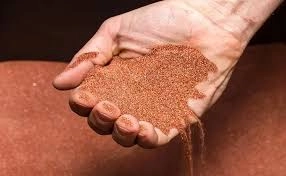Abrasives are crucial materials used in various industries for grinding, cutting, polishing, and surface preparation. They come in a wide range of grades, each designed to meet specific requirements based on hardness, particle size, and material composition. The effectiveness of an abrasive material is not solely dependent on its type but also on its grade. The grade of an abrasive determines its coarseness or fineness, which in turn influences the outcome of the abrasive process. This article delves into the different grades of abrasives, providing insights into their classification, applications, and how to choose the right grade for specific tasks.
Understanding Abrasive Grades
Abrasive grades are categorized based on the size of the abrasive particles, which is measured in grit. The grit number is indicative of the number of sharp particles per square inch of the abrasive material. A lower grit number means coarser abrasive with larger particles, while a higher grit number indicates a finer abrasive with smaller particles. This grading system helps in selecting the appropriate abrasive for various applications, from heavy material removal to fine polishing.
Coarse Grades
Coarse abrasives typically range from grit 24 to grit 60. These abrasives are designed for aggressive material removal, such as stripping away rust or old paint, leveling, and shaping hard materials. Coarse grades are often used in the initial stages of a surface preparation process where significant roughening or shaping is required.
Applications of Coarse Grades
- Removing weld splatter
- Stripping old paint or rust
- Leveling wood or metal surfaces
Medium Grades
Medium-grade abrasives fall within the grit range of 80 to 120. These are versatile abrasives used for moderate material removal and surface smoothing. Medium grades are suitable for preparing surfaces for further finishing or for creating a smoother appearance without significant material removal.
Applications of Medium Grades
- Smoothing wood surfaces before painting or staining
- Removing smaller imperfections on metal surfaces
- Preparing surfaces for final finishing
Fine Grades
Fine abrasives range from grit 150 to 320. These grades are used for finishing applications where a smooth surface is desired. Fine grades are ideal for removing minor imperfections and scratches left by coarser abrasives, resulting in a polished surface.
Applications of Fine Grades
- Final sanding of wood before applying finish
- Smoothing and polishing metal surfaces
- Preparing surfaces for high-gloss finishes
Very Fine and Ultra-Fine Grades
Very fine and ultra-fine abrasives include grits from 400 to 2500 and beyond. These grades are used for high-precision finishing tasks, such as polishing to a mirror finish or refining already smooth surfaces. The very fine and ultra-fine grades are essential for applications requiring exceptional surface quality.
Applications of Very Fine and Ultra-Fine Grades
- Polishing metals to a mirror finish
- Refining and polishing automotive paints
- Fine polishing of jewelry and precision instruments
Choosing the Right Grade
Selecting the appropriate abrasive grade is crucial for achieving the desired surface finish and material removal rate. The choice of grade depends on the material being worked on and the specific requirements of the task. Starting with a coarser grade and progressively moving to finer grades is a common approach for achieving a smooth, polished surface.
Conclusion
Understanding the different grades of abrasives is crucial for selecting the most appropriate material for a given application. Coarse grades are ideal for heavy stock removal, while medium grades strike a balance between material removal and surface finish. Fine abrasives can provide precise surface smoothness and create excellent surface refinement effects. Understanding the different grades of abrasives and their applications is crucial for selecting the right abrasive for a specific task. By choosing the appropriate grade of abrasive, you can achieve the expected results in material removal, surface quality, and efficiency.
